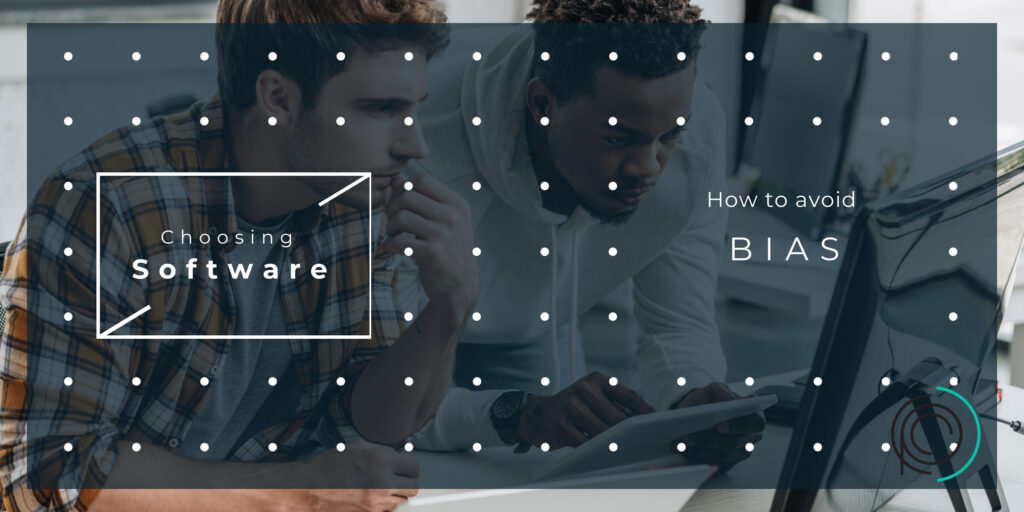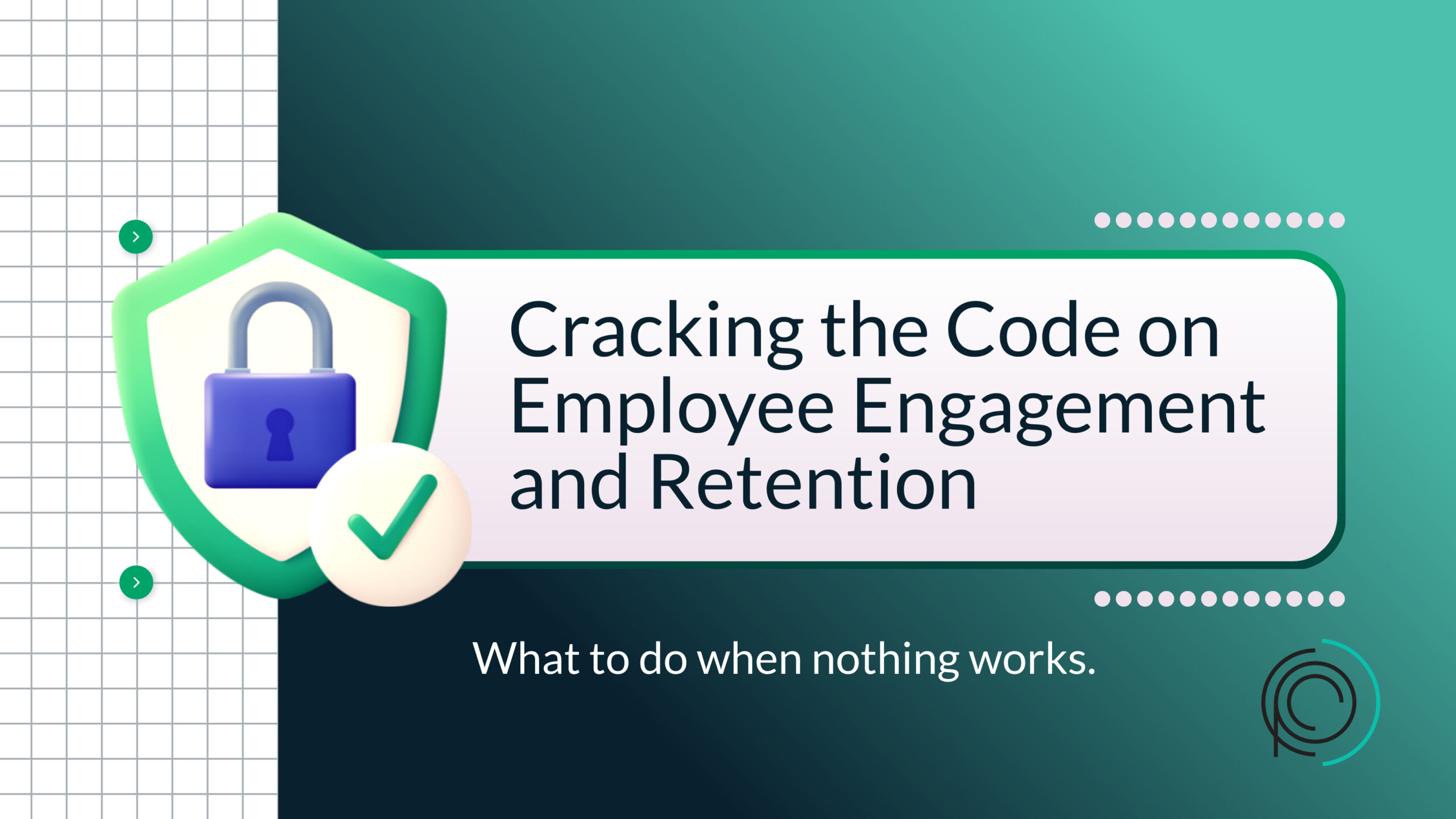Prioritizing Problems Based on Business Impact
The search for software that aligns with our objectives can be overwhelming, given the plethora of options available on the market. Identifying the ideal solution that meets our specific needs is akin to finding a needle in a haystack. This challenge is exacerbated by various biases that obscure our judgment, making a difficult task even more formidable.
In this detailed post, we aim to delve deeper into some of the most prevalent biases that can skew the software selection process. From confirmation bias, where we tend to favor information that confirms our pre-existing beliefs, to the bandwagon effect, where we might be influenced by a software’s popularity rather than its suitability to our needs, these biases can significantly impact our decision-making.
Our objective is not just to identify these biases but to offer strategies and insights that can help you navigate through them. We want to arm you with the necessary tools and knowledge to make choices that are well-informed and free from bias, ensuring that the software you choose truly aligns with your objectives and enhances your operational efficiency.
Brand Bias in Software Selection
Brand bias is the most prevalent type of bias encountered during the software selection process. Often, we find ourselves gravitating towards software solutions simply because they are among the most well-known or popular options on the market. While there’s inherently nothing wrong with opting for a product from a renowned brand, the problem arises when this becomes the sole criterion for our choice. The issue with blindly following a brand is that it might lead us to overlook software that offers features and functionality more closely aligned with our specific needs.
Choosing software based solely on its brand popularity means potentially missing out on lesser-known solutions that could offer superior features, better value for money, or a more user-friendly experience. It’s crucial to explore all available options, even those that might not have the same level of brand recognition as the industry giants. Brand bias can lead to a narrow focus on the attributes that a brand is famous for, at the expense of a thorough understanding of what the business actually requires from its software tools.
When entering the software selection process, it’s vital to approach it with an open mind and a clear understanding of your business needs. Detailing your requirements beforehand ensures that you won’t be swayed by brand reputation alone. Also, remember that salespeople are trained to sell you what you’ve asked for, not necessarily what you need. By broadening your search and considering a variety of software solutions, you increase your chances of finding a tool that not only meets but exceeds your expectations, ensuring that your business is equipped with the best tools for success.
Confirmation Bias
Confirmation bias manifests when an individual has already made up their mind about a particular decision, and then selectively gathers or pays attention to information that supports this decision, effectively ignoring or undervaluing evidence to the contrary. This cognitive bias can significantly affect decision-making processes. For example, if you are convinced that social media is the most effective channel for marketing your business, you might find yourself only looking into and valuing software products that bolster this belief. To counteract confirmation bias, it’s crucial to consciously dedicate time to exploring a wide range of software solutions, rather than immediately dismissing options that don’t align with your initial assumption. By doing so, you open yourself up to discovering a plethora of effective tools and strategies that might have otherwise remained unnoticed. There are dozens of excellent software choices available that may have never crossed your radar, each with unique features that could be immensely beneficial to your business’s marketing efforts.
Price Bias
In the realm of software solutions, the issue of bias can often emerge from the price tag attached to a particular product. It’s not uncommon for individuals to lean on price as a significant indicator of a product’s overall quality. While price can sometimes serve as a rough gauge for quality, it’s important to remember that a high price tag doesn’t guarantee superior quality and value. Conversely, a product with a low price isn’t automatically indicative of inferior quality.
The tendency to equate price with quality is a type of bias that can prevent you from discovering truly valuable software solutions. This mindset might lead you to overlook affordable options that offer high functionality and meet your needs perfectly. Likewise, it might cause you to invest in expensive software that doesn’t deliver on its promises, simply because its high cost led you to believe it would be the best in the market.
To avoid falling into the price bias trap, it’s crucial to shift your focus toward the value and utility that the software brings to the table. Consider the specific problems the software is designed to solve and evaluate how well it aligns with your needs. Look into user reviews, product demos, and the reputation of the company behind the product to make a more informed decision. By prioritizing the software’s functionality and the benefits it offers over its price, you’re more likely to find a solution that not only meets your requirements but also provides the best return on investment. Don’t let price bias cloud your judgment; instead, let the actual value and effectiveness of the software guide your choice.
Recommendation Bias
Recommendation bias is a critical factor that deserves our attention. While it’s undoubtedly beneficial to receive suggestions from family, friends, and those who are well-versed in technology, blindly following these recommendations may not always serve our best interests. The core issue often stems from the recommender’s lack of a deep understanding of your unique situation. They may not fully grasp the specific challenges you’re facing, the particular problem you’re attempting to solve, or how the recommended technology would integrate with the existing systems and processes within your business.
It’s essential to recognize that finding the right fit for your business involves more than just accepting advice at face value, no matter how well-intentioned it might be. A thorough evaluation process is indispensable. This means not only understanding your current operational status in depth but also actively engaging in comprehensive research about the software solution you’re considering.
Before making any purchasing decisions, ensure you have a crystal clear view of your business’s internal workings, goals, and the specific objectives you aim to achieve with the new technology. This might involve delving into how the software integrates with your existing infrastructure, its scalability, and its adaptability to future changes and challenges in your industry.
Furthermore, go beyond just one source of information. Explore a variety of resources such as online reviews, blogs, and forums. Websites dedicated to providing unbiased product reviews can offer invaluable insights that might not be immediately apparent from product descriptions or initial recommendations. Engaging with a broader community can also reveal how others have navigated similar decisions and the outcomes they’ve experienced.
By adopting a more meticulous and informed approach to technology adoption, you’re far more likely to make a choice that genuinely aligns with your business’s needs and future growth trajectory. This careful consideration ensures that you’re not just following a trend based on recommendation bias but are making a strategic decision that will positively impact your business in the long term.
Feature Bias
One significant challenge in the selection process is the issue of feature bias. Often, when evaluating software options, there’s a common misconception that more features automatically equate to a superior product. However, this is not always the case. In reality, an abundance of features can lead to a more complex and less intuitive user experience. This complexity can deter users, rather than facilitate their tasks, and can unnecessarily increase costs for features that remain unused.
When choosing software solutions, it’s crucial to prioritize features that directly support and enhance your operational goals. Opt for software that offers functionalities that align with your specific needs, ensuring that their implementation serves as a valuable tool rather than a hindrance. By carefully selecting software based on feature relevance and utility, you can avoid the pitfalls of feature bias, making for a smoother, more efficient integration into your workflows. This approach not only benefits you but also ensures that your staff can effectively utilize the software without unnecessary complications.
Software selection is a task that, while seemingly straightforward, is often fraught with bias. It’s absolutely imperative to recognize the various biases that can impact your decision-making process when it comes to selecting software solutions for your business or personal use. These biases, often subtle and overlooked, can skew your perspective and lead you away from making the best choice for your needs.
By being aware of the biases listed in this post, such as confirmation bias, where we might favor software that aligns with our pre-existing beliefs, or availability heuristic, where we choose software based on information that is most readily available but not necessarily the most accurate, you can make more informed decisions. This awareness enables you to critically evaluate software options, ensuring that your decisions are free of the most common biases.
It’s important to remember that the selection process should not be about the brand or hype surrounding the software. Instead, what’s essential is the value and quality that the software brings to your organization or personal projects. To ensure that you acquire software that best fits your needs, it’s crucial to get a full picture of your current state. This detailed assessment helps you answer some of the critical questions you’ll face when looking for new software.
In conclusion, by taking a deeper, more informed approach to software selection, you can avoid common pitfalls associated with bias. This ensures that the software you choose enhances your productivity, meets your specific needs, and represents a valuable investment in your technology infrastructure.
Are you struggling to determine which software fits your business needs perfectly? Don’t worry! We’re here to help. By booking a consultation with one of our seasoned experts, you’ll receive personalized advice tailored to your business’s unique requirements. Make the decision easier and ensure your business has the right tools to succeed by getting in touch with us today.







